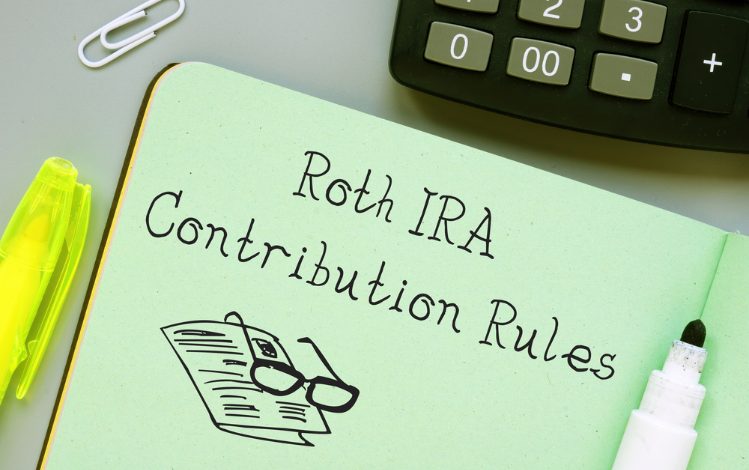The Roth IRA is arguably the best legal tax shelter available to taxpayers. While you don’t receive an upfront tax break, like you get with a traditional, pretax plan, all qualified distributions from a Roth are tax free. Not only that, but contributions to the plan can always be withdrawn without tax or penalty. However, there are income restrictions, so not everyone can directly contribute to a Roth IRA. Of course, there’s always a way to get around certain blocks, and the Roth is no exception; more on that later. First, let’s talk about what a Roth IRA is, why it’s so good, and the restrictions certain taxpayers have.
- The Roth IRA allows for tax-free distributions during retirement
- The IRS imposes income limitations on who can directly contribute to a Roth
- Even if you are above the allowable limit, there is a way through the “backdoor”
What is a Roth IRA?
The Roth IRA was created by the late Senator Roth of Delaware in 1997. It is an after-tax IRA, which unlike a traditional IRA, does not offer a tax deduction to the IRA holder for making contributions. However, if the Roth is opened at least five years and the Roth holder is over the age of 59 1/2, a qualified distribution can be made. Failure to satisfy both conditions will lead to taxes and penalties if you do not satisfy the age requirement. In addition, there are no required minimum distributions (RMDs) for Roth IRAs meaning you can let the account grow undisturbed, allowing you to reap even more rewards later in life.
A Roth IRA can be invested in traditional assets, as well as alternative assets via a Self-Directed Roth IRA, which is simply an IRA opened at the right custodian, that does not put restrictions on the types of investments you can make with your retirement funds.
Who is Eligible to Establish a Roth IRA?
The maximum Roth IRA contribution for 2023 is $6,500, plus an additional $1,000 “catch-up” contributions if you are least 50 years old. Contributions can be made for a given taxable year up until you file your 1040 tax return, which is generally April 15 of the following year.
The Roth IRA rules imposes income limitations on who can make direct Roth contributions. If one has annual income above $153,000 (single) or $228,000 (married filing jointly) in 2023, direct Roth contributions are not allowed. These numbers are increased annually based on cost of living adjustments.
Below is an IRS table for 2023 that details the phase-out ranges for making Roth contributions, which is based off ones modified adjusted gross income (MAGI). According to the IRS, MAGI is based on an individual’s gross income which consists of income from wages, salary, net business income, plus other forms of income, including pensions, interest, dividends, and rental income and is adjusted for certain tax deductible expenses, such as half-self-employment tax and student loans.
| If your filing status is… | And your modified AGI is… | Then you can contribute… |
| married filing jointly or qualifying widow(er) | < $218,000 | up to the limit |
| married filing jointly or qualifying widow(er) | > $218,000 but < $228,000 | a reduced amount |
| married filing jointly or qualifying widow(er) | > $228,000 | zero |
| married filing separately and you lived with your spouse at any time during the year | < $10,000 | a reduced amount |
| married filing separately and you lived with your spouse at any time during the year | > $10,000 | zero |
| single, head of household, or married filing separately and you did not live with your spouse at any time during the year | < $138,000 | up to the limit |
| single, head of household, or married filing separately and you did not live with your spouse at any time during the year | > $138,000 but < $153,000 | a reduced amount |
| single, head of household, or married filing separately and you did not live with your spouse at any time during the year | > $153,000 | zero |
Is There a Workaround?
If you earn too much money to directly contribution to a Roth IRA, there is a solution that will allow you to get money into this tax-advantaged account. The strategy is known as the “Backdoor Roth IRA.” Beginning in 2010, the IRS removed income limitations for making Roth conversions. This was a result of the 2008 financial crisis and the need to increase the amount of tax revenues collected.
This is how it works:
- Open a Traditional IRA account
- Contribute to the plan
- Treat the traditional IRA contribution as after-tax and do not report the contribution on your tax return as tax deductible
- Open a Roth IRA account
- Notify the IRA custodian that you wish to convert the after-tax traditional IRA to Roth
- IRA custodian will issue a 1099-R to the IRS indicating a zero-tax conversion
The Pro Rata Rules
When converting after-tax IRA funds to Roth, there is no tax due since there were no taxes withheld on the contribution. However, if you have outstanding pretax IRA funds, you must be aware of the pro rata rules. You cannot simply choose to convert the after-tax contributions to Roth. Instead, all IRA funds must be considered, whether they are pretax or after-tax. A percentage of the conversion would be taxable when you have existing pretax IRA funds, since they have never been taxed, and we all know we have to eventually pay tax on everything!
Conclusion
The Roth IRA offers many advantages for retirement savers; the best of which is tax-free distributions during retirement. Yes, an immediate tax break is great for many savers, but why limit the amount of a tax break you can receive? Eventually, all the assets of a traditional plan will be withdrawn, and taxed – including all the income and earning generated from your investments, which could be in the millions if you are lucky. So long as you can wait until you satisfy the requirements of a qualified distribution, you will never pay taxes on the (hopefully) millions of dollars in assets you’ve accumulated.
Of course, the IRS doesn’t want the rich to get richer by limiting who can contribute to the plan. If you’re in that boat, you can still use the backdoor to accumulate tax-free growth of your IRA and never pay tax again.








